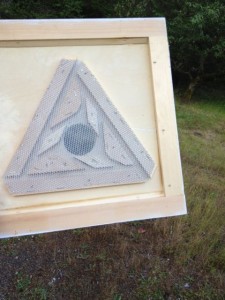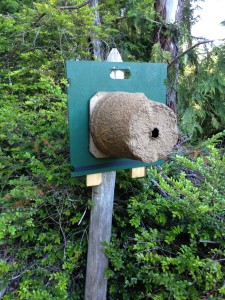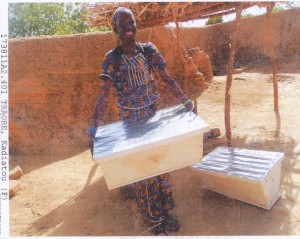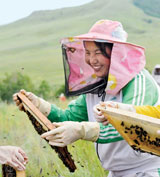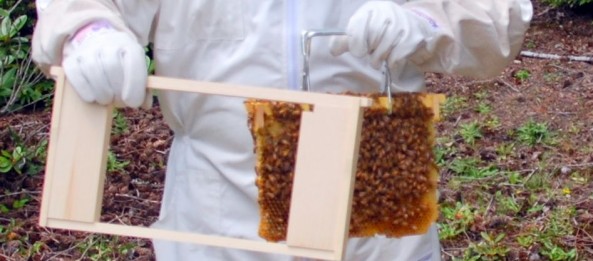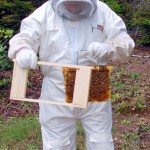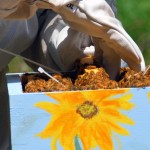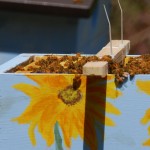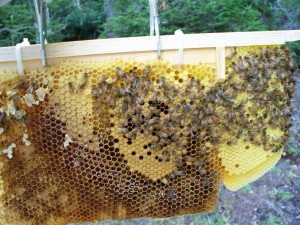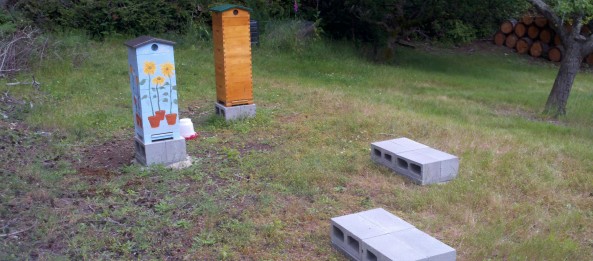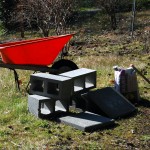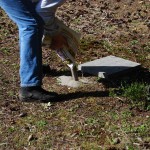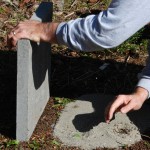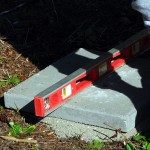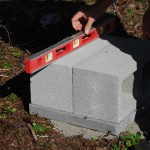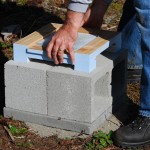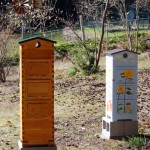I have a Warre hive that overwintered this year. As a result the bees came into this season strong and ready to collect honey. The top box in my Warre stack is heavy with honey so I hope to have my first honey harvest. The challenge at hand is how to get the bees to move out of the box that I want to harvest.
There are several ways to encourage the bees to move. One is the use of a fume board. This is a cloth covered board onto which you spray or pour a chemical that really smells bad to bee noses. This drives them down the stack into the box below. Another way that I’ve read about is using a power blower. Remove the box and send a stream of air through the box blowing the bees south. Neither of these really appealed to me.
Darren from House of Bees, the craftsman that built my Warre hives, made some cool bee escapes. These give the bees a way down but due to the little maze he has made they don’t know how to get back. I’m placing the bee escape under the top box and hoping the bees will go down and out of the hive and then not come back into the box I want to harvest. Right now it is packed with bees so it will be interesting to see what happens.

